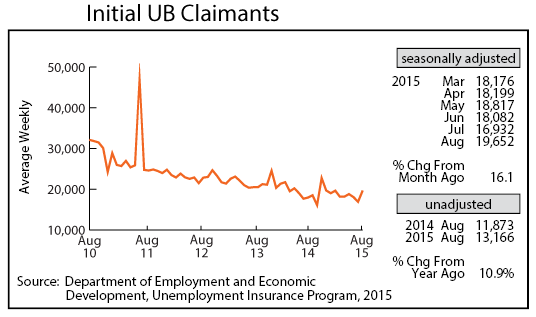by Dave Senf
September 2015
Note: All data except for Minnesota's PMI have been seasonally adjusted. See the feature article in the Minnesota Employment Review, May 2010, for more information on the Minnesota Index.
The Minnesota Index advanced 0.2 percent for the fourth month in a row in August as wage and salary employment climbed and the state's unemployment rate held steady at 4.0 percent. The U.S. index advanced 0.3 percent for the third straight month. Minnesota's index, which had been advancing slightly faster than the U.S. index earlier in the year, has been running slightly behind the national increase during the last few months. Minnesota's index is up 2.9 percent over the year compared to a 3.4 gain by the U.S. index.
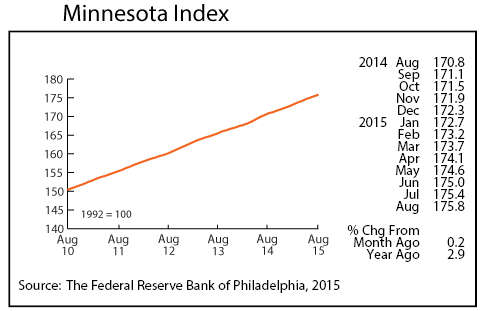
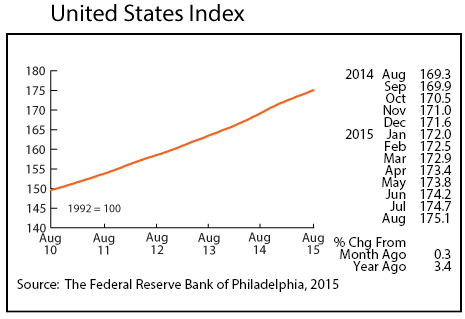
Adjusted Wage and Salary Employment increased by 7,300 jobs in August with all of the job growth occurring in the private sector. Private sector payrolls jumped by 12,300 jobs, while public sector payrolls dipped by 5,000. The 12,300 private sector job gain was the largest monthly increase since October 2014 and the third largest monthly gain since the job rebound commenced in late 2009. Payroll numbers expanded sharply in Professional and Business Services, Leisure and Hospitality, Educational and Health Services, and Financial Activities.
Manufacturing, which cut 1,000 jobs in August, has seen employment decline for four straight months. The manufacturing workforce hasn't been this low since September 2014. Exports for Minnesota manufacturers, like many U.S. manufacturers, are being hurt by the slowing global economy and a strong dollar. Most of the public sector employment drop occurred in local government as July's 5,400 job gain was reversed with August's 5,100 job decline. This is mainly a bookkeeping event related to seasonal hiring by public schools.
Minnesota's unadjusted over-the-year job growth was 1.3 percent in August, trailing the U.S. annual rate, 2.1 in August, for the eighth consecutive month. Minnesota's annual job growth for 2015 looks likely to lag well behind the U.S. rate for the second year in a row.

Minnesota's adjusted online Help-Wanted Ads ticked up 1.1 percent in August, topping the 0.6 percent gain in U.S. online help-wanted ads. Minnesota's 2.5 percent share of nationwide advertising continues to outpace the state's 2.0 percent share of national employment. This suggests that hiring demand is strong in Minnesota and that hiring is probably being slowed by the relative tight labor market.
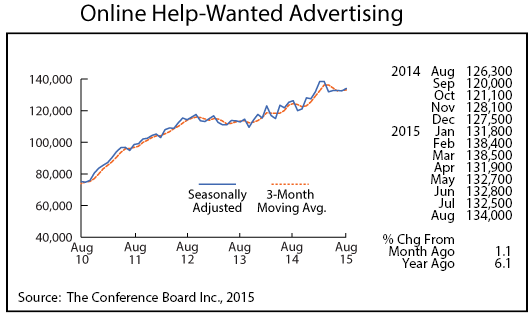
After inching upwards over the previous two months, Minnesota's Purchasing Managers' Index (PMI) slipped in August, sliding to 51.9. Minnesota's PMI index remains higher than the U.S. (51.1) and Mid-American (49.6) indices both of which also tailed off last month. Manufacturing activity is slowing across the U.S., but Minnesota's manufacturers are coping slightly better than national manufacturers. Minnesota's index is pointing towards continue economic expansion for the rest of the year despite slowing growth in manufacturing.
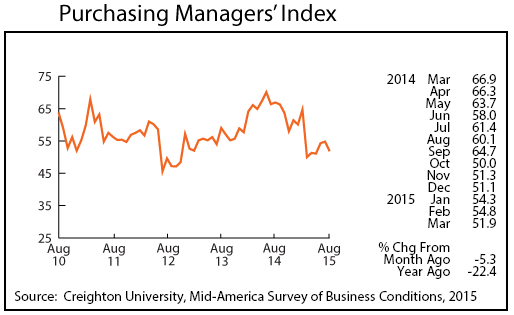
Adjusted Manufacturing Hours lost ground in August stumbling to 40.4. The factory workweek has declined sustainably over the last 12 months, reflecting a slowing manufacturing sector.
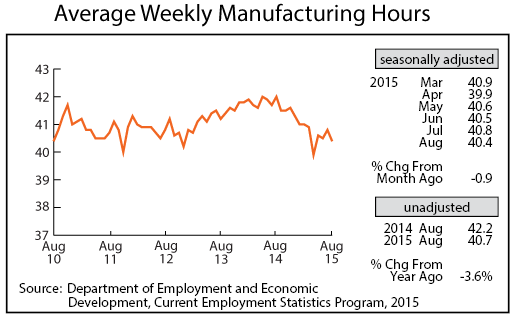
Manufacturing Earnings reversed two months of decline in August, increasing to $828.00, but remain lower than a year ago in real terms.
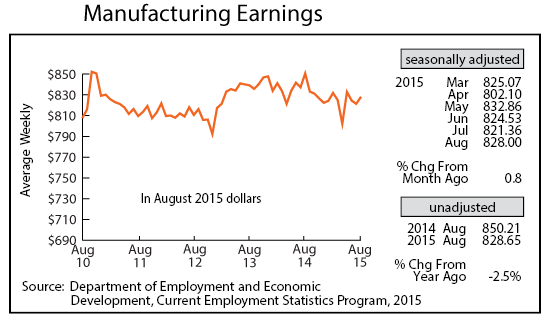
The Minnesota Leading Index zigzagged up in August to 1.72. The reading translates into a prediction of 1.72 percent GDP growth for the state over the next six months. The U.S. reading was 1.64 in August, suggesting that Minnesota's economy will expand slightly faster than the national economy through the rest of the year.
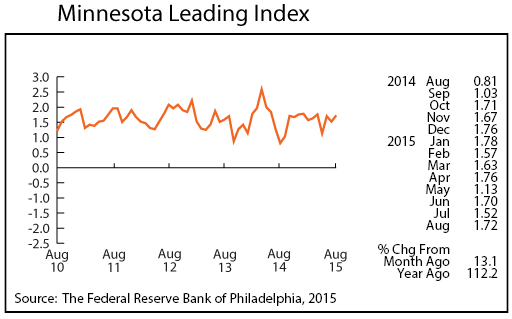
Adjusted Residential Building Permits headed up in August to 1,721, making up for about half of July's drop. Residential permits are running roughly 25 percent higher than last year through August, yet employment in Residential Building Construction and Specialty Trade Contractors has barely increased over 2014's levels. Annual average employment in these two industries jumped 6.2 and 6.4 percent in 2014 but so far this year have increase by less than 1.0 percent. This inconsistency suggest that 2015 Construction employment will likely see significant upwards revision when job numbers are benchmarked in March.
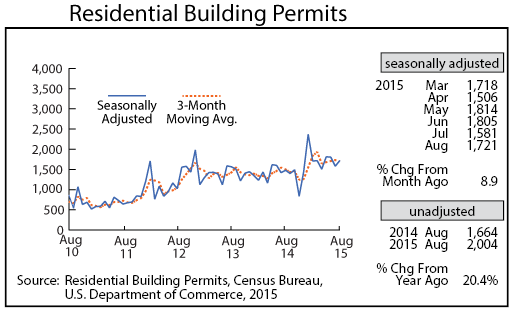
Adjusted Initial Claims for Unemployment Benefits (UB) rose sharply in August, reaching their highest level since February. Claims were significantly higher for Manufacturing and Mining workers compared to a year ago. Claims in all other sectors were roughly the same as last year. The slowing global economy and stronger dollar can be blamed for the bump in layoffs in Manufacturing and Mining. Initial claims, however, remain low by historical standards, implying that Minnesota's job growth will remain solid over the rest of the year. Minnesota's average annual over-the-year job growth as of August is 1.5 percent which is an improvement over the 1.3 percent achieved in 2014.
